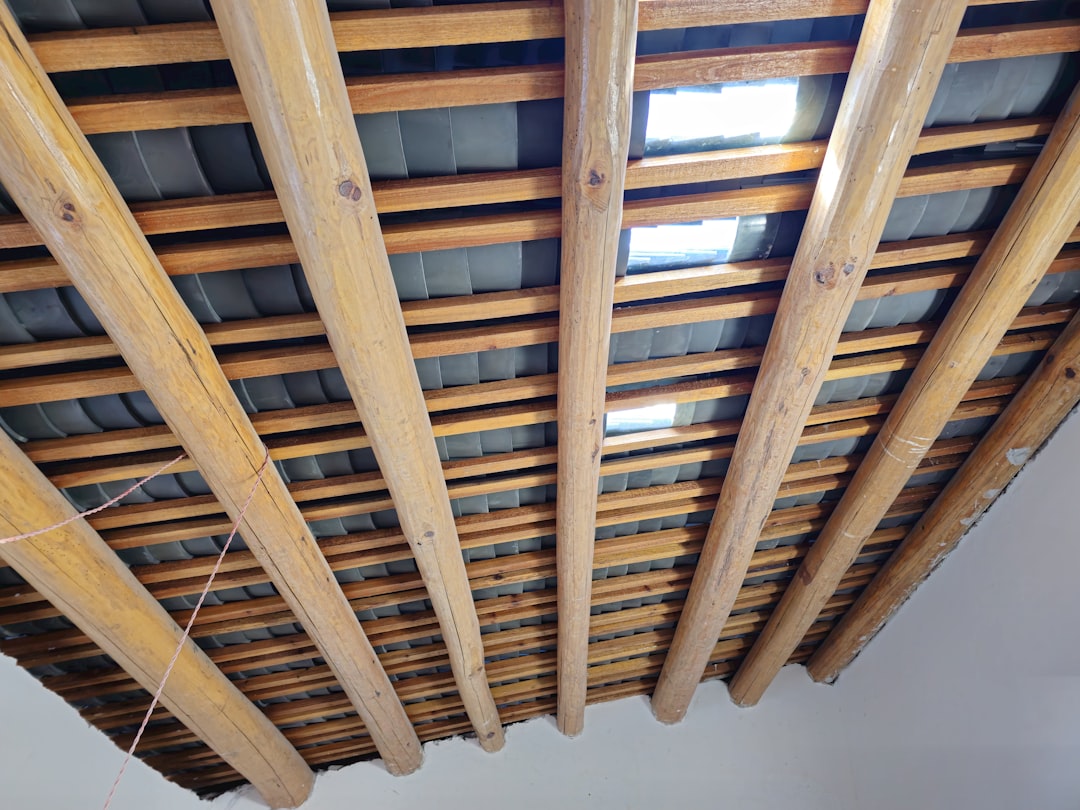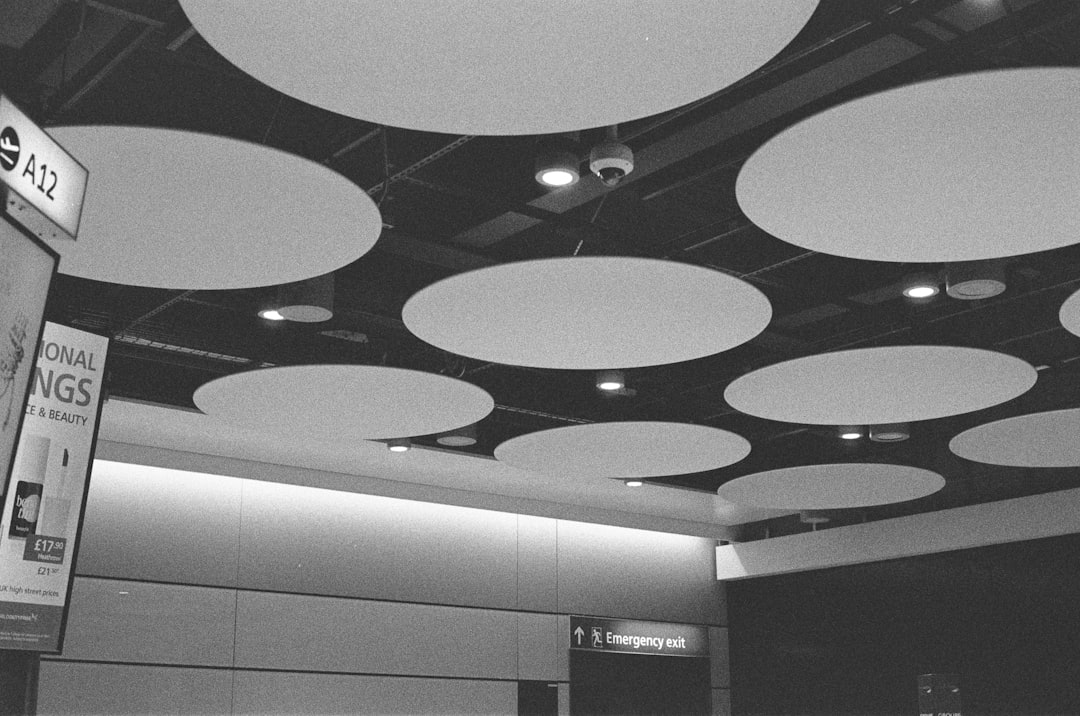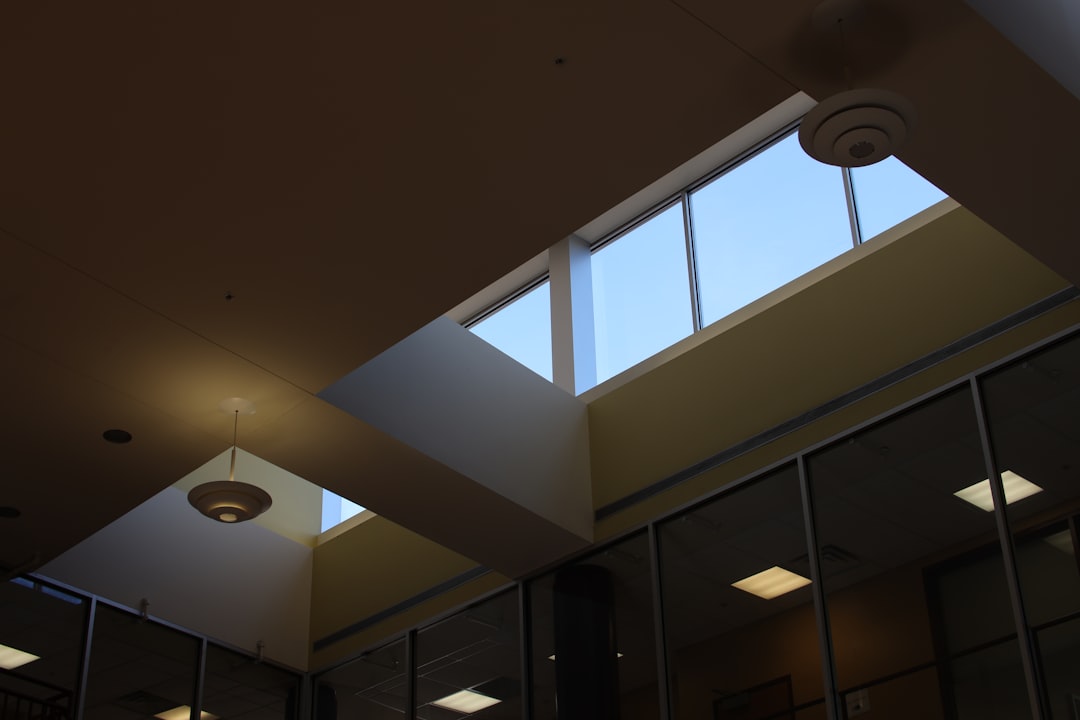

Engage prospects with a scan and streamline customer engagement with FREE QR code marketing tools by Sona – no strings attached!
Create a Free QR CodeFree consultation

No commitment

Engage prospects with a scan and streamline customer engagement with FREE QR code marketing tools by Sona – no strings attached!
Create a Free QR CodeFree consultation

No commitment
Acoustical ceiling contractors face increasing pressure to deliver superior results while standing out in a competitive marketplace. A common frustration is missing high-value prospects simply because their interest is not captured or tracked effectively, particularly when prospects interact offline or investigate services without ever submitting a form or reaching out. This often results in lost opportunities and a CRM full of cold or incomplete leads.
Traditional methods of lead generation, project documentation, and customer communication can be slow and prone to inefficiency, especially when information gets lost between paper-based processes and digital tools. Contractors frequently lack visibility into which businesses are engaging with their materials, documents, and job sites, leaving potential leads unknown and unpursued. Meanwhile, delayed or manual follow-up is all too common; by the time sales connects with someone, the lead’s interest may have cooled considerably.
With the rapid advancement of marketing technology, QR codes have emerged as a natural bridge between these analog and digital challenges. QR codes empower acoustical ceiling contractors to capture intent data in real time, connect physical materials to up-to-date digital content, and ensure valuable prospects are visible and actionable throughout the engagement journey. By integrating QR codes into marketing assets, job sites, compliance paperwork, and maintenance touchpoints, contractors can enable seamless interactions, trigger timely follow-ups, and achieve a unified, trackable view of every customer or prospect engagement.

In the acoustical ceiling sector, significant time and opportunity are lost when teams rely solely on outdated printed materials, static job site documentation, or manual outreach procedures. These approaches make it difficult to track which prospects show genuine interest or which field resources actually drive engagement. QR codes act as the connective tissue that links every physical touchpoint to live digital resources and real-time data capture.
When QR codes are planned with intent, they replace analog bottlenecks with instant, measurable actions. Printed brochures become gateways to portfolio videos and quote calculators. Paper forms give way to mobile-optimized service requests that sync to the CRM. Hand-delivered maintenance packets are complemented with durable QR stickers that provide on-demand instructions and warranty details. The result is more responsive service, fewer errors on site, and better visibility into who is engaging, where, and why.
Modern QR solutions let you generate and adjust codes for every use case, from pre-construction walkthroughs and submittal reviews to final sign-off and maintenance. Each scan can be logged into your sales and marketing systems, creating a unified view of field interactions. With platforms like Sona QR, you can identify anonymous high-fit prospects, consolidate engagement signals regardless of where the interaction starts, and trigger the right follow-up immediately so no opportunity is overlooked.

Acoustical ceiling contractors operate in an environment where immediate access to accurate information and streamlined compliance documentation is non-negotiable. Legacy processes often create data fragmentation between estimating, project management, and field teams. Without visibility into which assets are being used and by whom, it is easy to miss follow-ups, lose notes, or rely on outdated materials. This results in delays, rework, and lost pipeline momentum.
QR codes help overcome these challenges by turning every print asset into a living, digital touchpoint that keeps stakeholders aligned. Proposal packets, submittal covers, job site safety boards, fleet vehicles, and even ceiling panel stickers can carry scannable codes that connect to the right resource for the right person at the right time. Because scanners do not need a special app, adoption is high among busy field teams, facility managers, and general contractors.
In practice, this means an estimator’s proposal can lead directly to a guided selection experience, a superintendent’s site board can surface the newest safety plan, and a maintenance sticker can turn a small service inquiry into a long-term client relationship. With Sona QR, all of these interactions can flow into a central dashboard for consistent tracking and fast action.

Managing data across multiple job sites, complex bids, and varied compliance workflows can fragment records and cause slow follow-ups. Adopting a mix of QR code formats creates a flexible toolkit that connects every interaction to a single system of record. Different formats map to different goals, whether you want to deliver content, capture contacts, or launch conversations.
For acoustical ceiling contractors, the most valuable formats usually support installation accuracy, safety compliance, and sales enablement. These codes give crews instant access to the right content in the field, while enabling sales and operations to see who engages and when. Sona QR supports all major formats and makes it simple to manage them in one place.
A robust QR management platform consolidates scan data across these formats, streamlines cross-domain engagement, and supplies a single source of truth for every project. Dynamic codes also simplify updates, ensuring that scanners always reach the right destination without reissuing physical materials.

Growth is often constrained by uncertainty over which touchpoints produce high-intent leads. When QR codes are placed at strategic locations, they provide both a faster path to action and the data needed to prioritize follow-up. Each placement should be chosen to capture intent in the moment it occurs and to signal context back to your team.
Focus on assets that interact with decision-makers or influence their decision. Estimators’ proposals, on-site signage that is visible to facility managers, and visible placements on vehicles all convert casual interest into scannable moments. Over time, scan heatmaps and conversion data will reveal which placements are consistently delivering quality leads so you can double down and cut spend elsewhere. For a cross-trade example of field placements, see this overview of roofing QR marketing.
As you collect data from these placements, segment by location and asset type. A proposal scan from a hospital facilities director should route differently than a fleet scan from a retail manager. With Sona QR, these rules can be configured once and applied consistently across campaigns.

The biggest bottlenecks in contractor workflows often come from the inability to see who engages with physical assets and to connect those interactions to the right system. QR technology closes this gap by transforming physical artifacts into actionable steps within a digital process. The following use cases illustrate how codes can reduce errors, speed response, and expand revenue opportunities.
Think of each code as a switch that turns attention into action. Codes on packaging move installers to the right instructions. Codes on safety boards deliver the exact compliance documentation inspectors require. Codes on warranty cards gather testimonials, referrals, and service details in a consistent format that marketing and operations can handle at scale.
You can expand these use cases with niche variations: QR codes on submittal covers to confirm approvals, on delivery receipts to report shipment issues, or on acoustical clouds and baffles to access custom suspension details. Each tactic aligns a physical artifact with the next best digital action.
Each QR scan is a micro-conversion. It captures intent, context, and behavior that can fuel precise retargeting and follow-up campaigns. By placing multiple codes across your touchpoints, you create a rich signal map that distinguishes casual browsers from serious buyers and allows you to tailor the next step accordingly. For ad activation tactics, use Sona’s retargeting playbook.
In the acoustical ceiling space, audience distinctions are clear and actionable. You serve different stakeholders: general contractors, architects, facility managers, and owners. You also serve different project types: new build, retrofit, and maintenance. Segmenting by who scanned and where the scan occurred will let you deliver content that speaks to each persona’s needs and each project’s stage.
With Sona QR, each code becomes a smart entry point that captures behavior you can act on. You can score engagement, prioritize high-fit accounts, and route opportunities to the right rep or service team seamlessly.
QR codes are not a single-channel tactic. They are connectors that unify what your prospects and customers see in the field with what your team tracks and acts on in the office. By embedding codes across your offline and online campaigns, you can measure which assets perform, optimize resource allocation, and deliver consistent experiences that move people from awareness to decision.
For acoustical ceiling contractors, the most relevant channels include printed proposals, job site signage, direct mail to property managers, fleet advertising in local markets, and industry events. You can also extend QR execution into social campaigns by encouraging user-generated content or reviews after project completion.
With a centralized platform like Sona QR, you can manage all codes, monitor performance by asset and audience, and sync scan data with your CRM and ad platforms. QR codes serve as the offline onramp to your digital marketing engine and unlock a new layer of data collection across channels that used to be hard to measure.
A successful QR initiative starts with a clear objective, a thoughtful choice of code type, and disciplined testing. Once deployed, you will want to track performance rigorously and optimize based on real behavior instead of assumptions. This checklist walks you through a pragmatic approach tailored to acoustical ceiling contractors.
Before you start, align your internal stakeholders. Sales, project management, field operations, and marketing should agree on what success looks like and which systems will capture and route new data. Sona QR can streamline much of this by serving as the hub for code creation, tracking, and integrations.
Clarify the business outcome you want. For example, do you want to collect maintenance signups post-install, educate architects on new acoustic solutions, or reduce bidding friction for prospects comparing options? A tightly scoped goal will guide design, placement, and measurement.
Tie each use case to one primary action. Examples include view installation guide, request a quote, download spec sheet, or submit a warranty claim. When everyone understands the desired action, it becomes easier to craft a call to action that converts and to evaluate performance fairly.
Decide between static and dynamic codes. Static codes are appropriate for fixed destinations such as a permanent installation manual that rarely changes. Dynamic codes are better for campaigns that require updates, A/B testing, or detailed analytics, such as launch events or seasonal offers.
Confirm that your platform supports the features you need. If you want scan-level analytics, retargeting audiences, or future flexibility, choose dynamic codes. Sona QR provides editable destinations, robust tracking, and integrations with CRM and ad platforms, which are essential for ongoing optimization.
Design with clarity. Incorporate your logo, brand colors, and a high-contrast frame around the code. Pair the code with a clear, benefit-driven call to action such as Scan for safety docs or Get an instant estimate. Include a short URL near the code as a backup for those who cannot scan.
Test in realistic conditions. Verify scannability on multiple devices and at different distances and angles. Check lighting and glare on glossy materials, ensure codes are large enough for quick scans on vehicles, and validate that job site signage codes are reachable and durable. Run a content review to confirm that landing pages load fast, communicate clearly, and capture the intended data.
Start with placements that have the highest visibility to your target stakeholders. For a contractor, this often includes proposals, job site safety boards, fleet graphics, project completion stickers, and targeted direct mailers. Expand to trade show materials, brochures, and submittal covers as tracking reveals what works.
Match placement to audience behavior and context. Codes on vehicles should link to short, mobile-friendly pages with a fast CTA. Codes on site boards should open precise documents. Codes on proposals should lead to interactive tools or scheduling. Ensure every placement has a unique code so you can compare performance across channels.
Monitor scan rates, conversion to the next step, and eventual revenue contribution. Use a centralized dashboard to track performance by asset, location, and audience. Set alerts for high-intent actions such as repeated scans or scans from high-value accounts so sales can respond quickly.
Refine continuously. A/B test landing page copy and calls to action. Adjust placement, size, and contrast for higher scan rates. Use Sona QR’s analytics and integrations to segment audiences, trigger personalized nurtures, and allocate budget to the assets that deliver the best return.
Contractors often struggle to prove ROI on marketing and outreach, especially when lead sources span print, events, job sites, and digital ecosystems. QR scan data provides a common thread that ties offline interactions to online outcomes so you can see which tactics generate movement in the funnel and revenue for the business.
The goal is not to count scans for their own sake. The goal is to understand how each scan contributes to the buyer journey: a form fill, a scheduled walkthrough, a signed change order, or a service renewal. With Sona QR and Sona, an AI-powered marketing platform for identity resolution and revenue attribution, you can connect those scans to known contacts, campaigns, and pipeline.
When you connect scans to tangible outcomes, QR codes become a performance channel with a clear ROI story. This clarity allows leadership to invest confidently and allows teams to focus on the placements and messages that move the needle.
You can mitigate the frustration of fragmented data and low-intent outreach by structuring your QR deployments around clear goals, measurable placements, and automated follow-up. Simple habits make a significant difference in scan rates and conversion quality.
Educate your team and your audience on the why behind each code. If crews understand which code launches a safety briefing and which code routes service requests, they will guide customers to the right action. If prospects know what value a scan delivers, they are more likely to engage and convert.
One creative example is to include a QR code on change order forms that opens a quick explainer on scope adjustments and timelines. Another is a laminated QR card in mechanical rooms that links to a service portal with project numbers pre-filled, ensuring faster, more accurate requests.
Many contractors feel the pain of manual processes, untracked interactions, and opaque lead sources. QR codes transform everyday paper and plastic into a connected, data-rich marketing and operations network. When every proposal, sign, sticker, and packet can trigger an action and send a signal, your team gains the visibility required to prioritize work and grow efficiently.
By embedding QR technology into your workflow, acoustical ceiling contractors can shift from fragmented outreach to frictionless customer experiences; from reactive communication to proactive follow-up; and from scattered data to actionable insights that fuel smarter business growth. The approach scales from small, local jobs to complex multi-site projects because each code is both a convenient access point and a consistent data collector.
QR technology equips acoustical ceiling contractors to turn every physical surface into a digital entry point and every moment of interest into a moment of action. With Sona QR, you have everything you need to capture demand at the source, measure what matters, and connect scans to revenue. Get started by generating your first codes, place them on your highest-impact assets, and use the resulting data to refine your strategy week by week. Start creating QR codes for free.
QR codes have revolutionized the acoustical ceiling contracting industry by transforming traditional project workflows into efficient, data-driven processes. From streamlining access to installation manuals and maintenance guides to enabling quick communication between contractors and clients, QR codes enhance operational transparency and customer satisfaction. Imagine effortlessly providing clients instant access to product specifications or warranty information right at the job site—boosting trust and reducing delays.
With Sona QR, acoustical ceiling contractors can create dynamic, trackable QR codes that update instantly without reprinting, allowing seamless sharing of up-to-date resources and progress updates. Every scan captures valuable insights into client engagement, helping you refine service delivery and strengthen customer relationships. Start for free with Sona QR today and turn every code into a powerful tool for project success and client loyalty.
QR codes help acoustical ceiling contractors capture real-time intent data, connect physical materials to dynamic digital content, improve lead visibility, streamline compliance, reduce errors, and enhance customer engagement while providing measurable insights across projects.
QR codes enable instant access to maintenance guides, warranty details, and service request forms, allowing customers to submit feedback or requests easily, which speeds up response times and fosters ongoing relationships.
QR codes placed on job site signage link directly to up-to-date safety protocols, inspection checklists, and compliance documents, enabling crews and inspectors to verify procedures instantly and reduce manual errors.
Best practices include embedding unique QR codes on bids, job site signs, fleet vehicles, and trade show materials to capture high-intent leads, track engagement, trigger automated follow-ups, and optimize marketing spend based on scan analytics.
Contractors can place QR codes on proposals, brochures, fleet vehicles, and maintenance stickers to direct prospects to interactive tools, contact forms, or service requests, capturing qualified leads and enabling timely, personalized follow-up.
Use Sona QR's trackable codes to improve customer acquisition and engagement today.
Create Your FREE Trackable QR Code in SecondsJoin results-focused teams combining Sona Platform automation with advanced Google Ads strategies to scale lead generation

Connect your existing CRM

Free Account Enrichment

No setup fees
No commitment required

Free consultation

Get a custom Google Ads roadmap for your business






Launch campaigns that generate qualified leads in 30 days or less.
